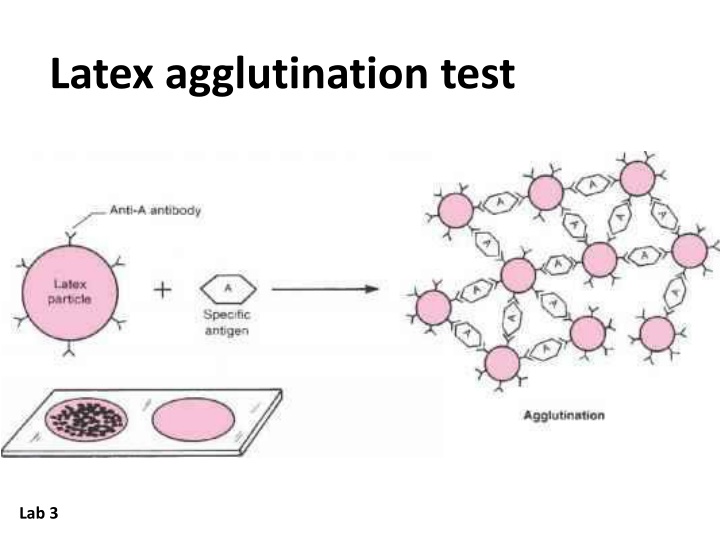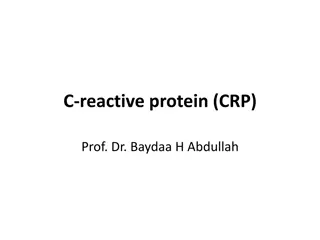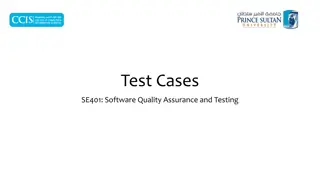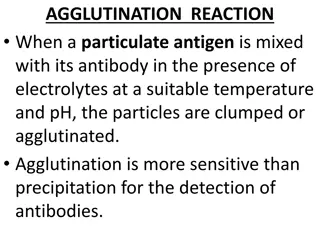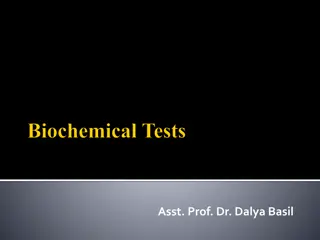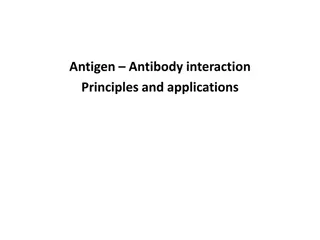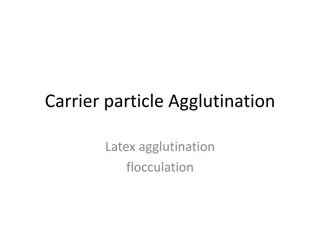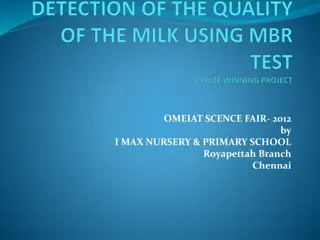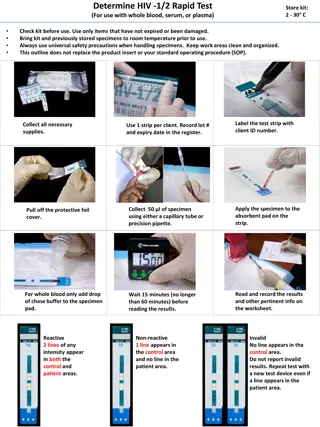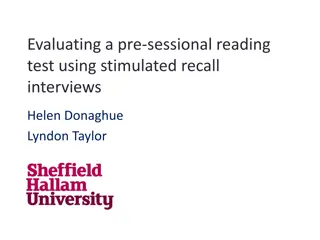Latex agglutination test
The "Latex Agglutination Test Lab" details the procedure and importance of this specialized diagnostic test conducted in laboratory settings. It provides insights into how this test is utilized to detect specific antigens by observing the agglutination process. By examining the interaction of latex particles and antibodies, healthcare professionals can accurately identify various infections and conditions. This comprehensive guide offers a thorough explanation of the test's significance in clinical assessments and its role in aiding accurate medical diagnoses.
Download Presentation

Please find below an Image/Link to download the presentation.
The content on the website is provided AS IS for your information and personal use only. It may not be sold, licensed, or shared on other websites without obtaining consent from the author.If you encounter any issues during the download, it is possible that the publisher has removed the file from their server.
You are allowed to download the files provided on this website for personal or commercial use, subject to the condition that they are used lawfully. All files are the property of their respective owners.
The content on the website is provided AS IS for your information and personal use only. It may not be sold, licensed, or shared on other websites without obtaining consent from the author.
E N D
Presentation Transcript
Latex agglutination test Lab 3
introduction When a particulate or insoluble antigen is mixed with its antibody in the presence of electrolytes at a suitable temperature and pH, the particles are clumped or agglutinated. Agglutination reactions are classified as direct, indirect (passive) and reverse passive agglutination reactions.
Direct Agglutination Test refers to the assays in which the antigen directly agglutinates with the antibody. Indirect or passive agglutination involves coating of antigen on the surface of a carrier molecule (e.g. RBC, latex or bentonite), such that the antibody binds to the coated antigen and agglutination takes place on the surface of the carrier molecule. They are also referred to as particle agglutination test . Reverse passive agglutination test is a special type of particle agglutination test in which the antibody is coated on a carrier molecule which detects antigen in the patient s serum.
Latex Agglutination Test A group of passive agglutination tests carried out by coating either antigen or antibody on an artificial carrier particle, called latex bead are called as latex agglutination test. They may alternatively referred to as latex fixation test and may be: Latex Agglutination Test (LAT) for Antibody Detection: A Passive Agglutination Test with Antigen bound to the surface of latex beads (polystyrene latex particles; 0.8- 1 m in diameter). Latex Agglutination Test (LAT) for Antigen Detection: A Reverse Passive Agglutination Test with Antibody bound to the surface of latex beads.
Objectives of Latex Agglutination Test To detect microbial and viral infections, autoimmune diseases, hormones, drugs or serum proteins by agglutination reaction of antigen-antibody.
Principle of Latex Agglutination Test Antibody or antigen molecules can be bound in random alignment to the surface of latex (polystyrene) beads. The number of antibody or antigen molecules bound to each latex particle is large, resulting in a high number of exposed potential binding sites. Antigen or antibody present in a specimen binds to the combining sites of the corresponding antigen/antibody exposed on the surfaces of the latex beads, forming cross-linked aggregates of latex beads and antigen/antibody. Large particle size of latex facilitates the visualization of the antigen-antibody reaction.
Results and Interpretation of Latex Agglutination Test Positive: Agglutination of the beads evident by clumps in any of the dilutions is considered a positive result. It confirms either that the patient s body has produced the pathogen-specific antibody (if the test supplied the antigen) or that the specimen contains the pathogen s antigen (if the test supplied the antibody). Negative: No agglutination or formation of clumps. Absence of pathogen-specific antigen or antibody.
Advantages of Latex Agglutination Test The size of the latex bead (0.8 m or larger) enhances the ease with which the agglutination reaction is visualized. LAT is one of the most widely used tests at present as it is very simple and rapid. It is believed to have replaced many other serological tests including co agglutination tests. They are inexpensive, relatively stable and not subject to cross reactivity with other antibodies. Levels of bacterial polysaccharides detected by latex agglutination have been shown to be as low as 0.1 ng/mL.
